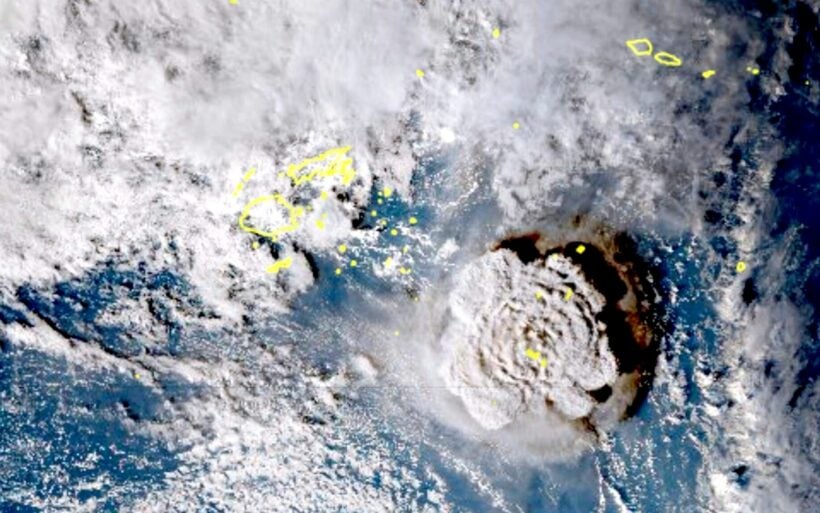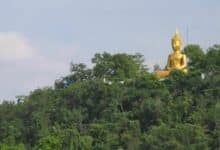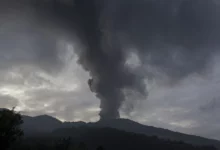Volcano eruption in Tonga confirmed the largest ever recorded

Just as Indonesia copes with the devastation of the 5.6 magnitude earthquake that struck yesterday, scientists in New Zealand announced their findings about another natural calamity in January. The scientists confirmed that a volcano eruption in Tonga in January was the largest ever recorded using modern equipment.
The massive eruption took place deep in the ocean when the Hunga Tonga-Hunga Ha’apai volcano exploded with the force of hundreds of atomic bombs. The scale of the explosion is hard to comprehend.
The volcano was the first ever recorded to eject material out of the Earth’s stratosphere and into the next layer of the atmosphere, the mesosphere 50 kilometres up. Scientists have now measured the amount of material displaced in the eruption to be 10 cubic kilometres, the equivalent of about 2.6 million Olympic swimming pools.
Marine geologist Kevin Macay was among the group at New Zealand’s National Institute for Water and Atmospheric Research that measured it and explained the volcano’s intensity.
“The eruption reached record heights, being the first we’ve ever seen to break through into the mesosphere. It was like a shotgun blast directly into the sky.”
Another measure of the shocking immensity of the volcano was the spread of lava, gases, and volcanic ash that spewed with great force out of the volcano and along the sea floor. Called pyroclastic flows, the lava can be as hot as 1000 degrees Celcius.
In this volcano eruption, the flows reached speeds of up to 700 kilometres an hour and had such force they were able to travel over large hills and at least 80 kilometres away from the source. Emily Lane, the team’s principal scientist explained the stunning power of the Tongan volcano.
“The pyroclastic flows appear to extend beyond that, perhaps as far as 100 kilometres away. The sheer force of the flows is astonishing — we saw deposits in valleys beyond the volcano, meaning they had enough power to flow uphill over huge ridges and then back down again.”
The volcano explosion in the ocean depths created tsunami waves 15 meters high that devastated the small island nation of Tonga. At least three people lost their lives and homes were completely destroyed by the monumental waves. Rescue aid was impeded by the damage done in the blast to communication cables running along the ocean floor.
The team of scientists researched all the displaced material, according to Bangkok Post. They found that the crown of the volcano is now a crater some 700 meters deeper than before the eruption. The team accounted for about 75% of the matter expelled during the volcano’s explosion. The rest was a lot of particles – about two cubic kilometres – that floated in the atmosphere for months.
One positive effect came from the volcano though: the debris in the air created fantastic sunsets that could be seen all across the Pacific as far away as New Zealand about 2,300 kilometres away.
Latest Thailand News
Follow The Thaiger on Google News:


























